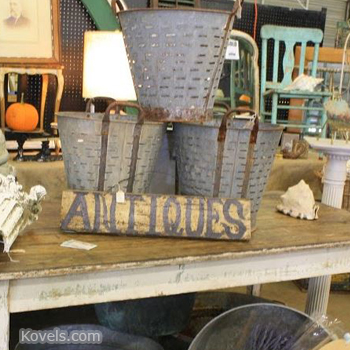It’s flea market time and there is probably a large one near you. Here are some tips to help those who have never spent a day looking for treasures. Count your steps. You may walk several miles. But most flea markets are wheelchair friendly.
1. Park as close to the entrance as possible and look for landmarks. You may be in a field that will be filled with cars when you return. Your car or smartphone GPS can show where you’ve parked and help direct you back. There are several parking apps, but they must be set when you park, not later, when you are searching for the car.
2. Most flea markets have public toilets and places to sit and rest or eat. But some are on open fields. You may need a comfort stop. Try the Sit and Squat app. It tells you where there is a free open toilet. There are also other apps and websites that tell where the nearest restroom is, the nearest packer, and nearby food or lodging possibilities.
3. Set a meeting time and place in case your group is separated, and your cell phones don’t work. (This can happen in a large building.)
4. Dress for the weather, hot or cold. Use sunscreen, wear sun protective clothing and comfortable shoes, not high heels or open sandals. The ground may be wet, muddy or covered with gravel or straw. If you go with a friend, wear a bright shirt or scarf so you can be spotted in a crowd. It’s easy to lose each other if its brimming with treasure-seekers. Choose slacks and a top with pockets, helpful for carrying your phone, sunglasses, pills, etc. And wear a hat with a brim.
5. Keep money and/or credit cards in a zipped wallet or purse.
6. Bring some note paper. Always get a receipt with a full description of your purchase, the date, price, and the dealer’s phone number or email address.
7. Bring a tote bag to carry small purchases. You may also need a magnifying glass, tape measure (note that a dollar bill is 6 inches long!), and a magnet to test metal. Take a plastic trash bag to use as a raincoat if needed.
8. Make a list of things you know you need and buy them when you see them. You can pay for an item and pick it up later if it is large. Be sure it will fit in the car and go in a door and up the stairs at home. Carry a bungee cord to tie down the trunk if it might be necessary.
9. Take cash – not all dealers take credit cards. Most take personal checks. But sometimes saying “I have cash” gets a better deal. When you buy something, write down the number of the dealer’s booth. You may need to go back to it to pick up your earlier purchases or to see if you left your sunglasses.
10. You can get an idea of what prices should be from Kovels.com/priceguide.
And remember the Kovels’ favorite saying, “If you like it, buy it. You only regret what you don’t buy.”
Kovels’ booklet, “Flea Market Strategies: How to Shop, Buy, and Bargain the 21st-Century Way,“ has more tips on what to wear, what to bring along and how to negotiate. Also included are tips on spotting fakes, advice on how to pay for purchases, and a list of the latest smartphone apps to help buyers shop, share and ship. Available at KovelsOnlineStore.com.




Leave a Reply
You must be logged in to post a comment.